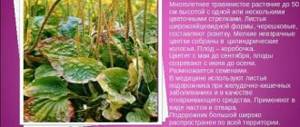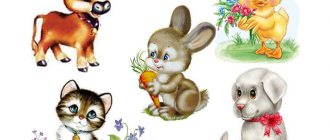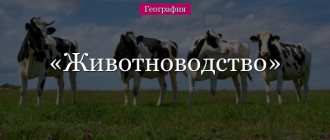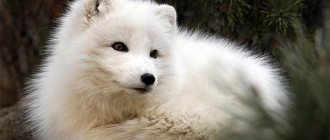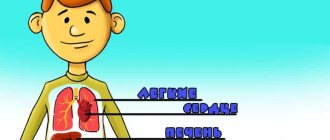Lesson plan on the surrounding world for 1st grade according to the educational complex “School of Russia”
Municipal budgetary educational institution
Medvedskaya basic secondary school
A lesson on the world around us in 1st grade using the School of Russia educational complex using active teaching methods.
Topic: “What do different plants have in common?”
Developed and carried out:
primary school teacher T.V. Kholeeva
October 2020
Lesson type: learning new knowledge.
Goal: based on theory and practice, learn to classify groups of plants according to their characteristic features; distinguish between plant organs and their functions. Develop the ability to use acquired knowledge in practical activities.
Tasks:
— influence a positive emotional and psychological mood; — improve students’ knowledge about living and inanimate nature, develop the ability to recognize groups of plants and plant organs; — promote the development of students’ analytical abilities (the ability to compare, highlight, generalize), coherently express their thoughts orally, stimulate students’ cognitive activity, promote a culture of communication, the ability to work independently and collectively; - cultivate a caring attitude towards the environment.
Planned results:
Subject results: know what the components of plants are called and what they are needed for.
Meta-subject results: understand the educational task of the lesson and strive to fulfill it; compare parts of plants and know what they serve, know about the significance of plants in people's lives, answer final questions and evaluate their achievements in the lesson. To form elements of educational cooperation, the ability to construct speech statements.
Personal results: realize the need to take care of plants; understand the importance of plants in our lives, provide motivation for learning activities
Methods Verbal, visual, partially search, practical.
Form of work: Collective, individual, pair.
Resources
Textbook on the world around us, edited by A.A. Pleshakova part 1, workbook; The teacher has a computer, a multimedia projector, a presentation on the topic, cards for paired and individual work
During the classes.
I. Motivation (self-determination) for educational activities
I would like to start our lesson with these words: My friends! I am very glad to enter our friendly class. And for me, the attention of your smart eyes is already a reward. I know: everyone in the class is a genius, but without work, talent is of no use. Cross the swords of your opinions - together we will create a lesson!
- Smile at each other, greet me with a smile. Everyone took their seats, no one was cramped, I’ll tell you a secret: “It will be interesting!” - Let's get ready for the lesson. Listen carefully and repeat after me.
Psychological mood. We are smart, We are friendly, We are attentive, We are diligent, We are studying in 1st grade, we will succeed!
II . Updating and correcting basic knowledge. - Today we have not an ordinary lesson, but a lesson - a journey. Look, my dear friend, what is around? The sky is light blue, the sun is shining golden, the wind plays with the leaves, a cloud floats in the sky. Field, river and grass, mountains, air and foliage, Birds, animals and forests, thunder, fog and dew. Man and the season - It's all around... (Nature).
First stop “Nature” Motto: We repeat everything we know. The World of Nature surrounds us And a blitz survey is offered to us . Collective work - What 2 groups is nature divided into?
(What kind of nature is there?) (Living and inanimate) - Name the signs of living nature. (birth, breathing, nutrition, movement, growth and withering (death) - Give examples of objects of living nature.
(Give examples)
We've checked your knowledge, we'll test your skills. We'll test everything we know. Let's check how you can distinguish between living and inanimate objects. We will work in pairs. Game “Living and Nonliving” Pair work
(Envelope No. 1) birch, lilac, dandelion - Your task is to determine which items (objects) belong to living nature, which to inanimate nature and put them in the appropriate baskets. The green basket contains objects of living nature, the red basket contains inanimate nature. (Show baskets) Now, let’s check whether you completed the proposed task correctly. Examination.
"Higher Order Questions" - Understanding
(Prove why objects belong to a particular nature), correct mistakes. Raise your hand if you have an extra picture left. —Which picture is the odd one out?
(Ex: car, plane, house, etc.) Teamwork
- Why do you think that she is superfluous? (Made by human hands) That's right, it is the result of human labor, and therefore does not belong to nature. We completed the first task with an “A”, we can continue further.
Physical exercise. They stood up straight, smiled, everyone stretched high, everyone sat down together and sat back at their desks.
III . New topic and purpose of the lesson. Guess the riddles:
They didn’t dig, they didn’t drill, but they extracted water (roots)
In plants it can be climbing and clings to any objects; in trees it is strong and thick (stem)
Red Egorka
Fell into the lake. He didn't drown himself. And didn’t stir the water (leaf)
Yellow, fluffy, fragrant balls (flower)
A box grows with seeds (fruit) in it.
The teacher attaches the answers along with a picture of the answer to the board.
Why does a plant need this or that part?
Let's read from bottom to top. What happened?
Can you guess what we will talk about in class?
IV.Perception and primary awareness of new material. Second stop of the “Groups of Plants.” Name the plants you see.
(Christmas tree, birch, currant, lilac, chamomile, dandelion)
Task “Find a pair” Pair work
- The task “Find a pair” (Envelope No. 2) will help us find the answer to the first question (What groups are plants divided into?) A set of 3 cards: Christmas tree, currant, chamomile.
Task : Find a pair for each picture, try to explain why you made the pairs you did.
(Make pairs with previous pictures from envelope No. 1 “Wildlife”) - How many pairs did you get? (3) - What pairs did we get? I wonder what groups of plants they belong to? (A fir tree and a birch are...trees. Name their characteristic features. A TRUNK IS A PERENNIAL THICKEN STEM. Currants and lilacs are... Dandelion and chamomile are... We compare them by height, number of stems, thickness, life expectancy. We check them using a textbook. - Which ones? Can you tell the difference between a tree and a shrub? - Now do you know what groups plants are divided into? Name them. (Trees, shrubs, herbs)
Let's repeat the material, consolidate the skills, so that everyone can say: “I can do all this.” Let's see if you have learned to distinguish between groups of plants. (Envelope No. 3) - for each student. Individual work
(The envelope contains 1 plant that belongs to one of the studied groups). Task: Determine which group your plant belongs to and plant it in the desired clearing. (Students pin a plant on the board. I ask individually why they made this choice.
Prove (- Why do you think that this plant belongs to the group of trees (shrubs, herbs)? - Assess your knowledge.
Physical exercise Turn on the music. Imagine that you are a small seed. They put you in the ground (the children squatted and hugged themselves with their arms). The rains have passed, the grain has swelled (the children raise one hand up, then the other). Little time has passed. You are growing (the children are slowly getting up). Now you have grown up (the children stretched out their arms and shook them). The wind bends and breaks you, you swing in different directions, but do not break. The root holds you firmly (children bend in different directions). Birds have built nests on your branches (children imitate the flight of birds with their hands). Autumn came. The birds flew away to warmer climes. The leaves are flying away. (Children show falling leaves with their hands). The tree falls asleep (children hug themselves).
Third stop “Plant Organs” - I know for sure that a person has organs, we have already studied this. The game “Say a Word” has children say the ending of the poem and explain what sense organ it is. Seeing dad, seeing mom, Seeing the sky and forests help us... (eyes) Eyes are an organ... (vision)
The smell of bread, the smell of honey, the smell of onions, the smell of roses will help you distinguish... (nose) The nose is an organ... (of smell)
The hare has it on top of his head, you, your girlfriend, There are rumors and not rumors. What is this? Our... (ears) Ears are the organ of... (hearing)
To taste compote, a person has... (mouth) The tongue is an organ... (of taste)
Soft and hard, sharp, dull, hot, cold, wet, dry... It’s difficult to figure it out. Ours will help us... (skin) Skin is an organ... (touch)
- Do plants really have organs? (Maybe they can also see, hear, speak?) - What organs do plants have? — What function (work) do plant organs perform? (What are they for?) We have to find the answer to these questions. Task “Assemble a picture” Pair work (Envelope No. 5) Puzzles - plant organs - What plant did you get?
Which group does it belong to? - What parts does it consist of? — What common parts do trees and herbs have?
Checking with the textbook . We read about plant organs; if something hasn’t been said, I add it (eg: fruits, seeds)
Individual work (Envelope No. 6) Before you is an image of a plant, independently identify its organs and indicate it with a letter (k - root, l - leaves, s - stem, c - flower) Check. — Have we found the answer to the question, what organs do plants have? — Evaluate your knowledge.
Physical exercise. The wind blows in our faces, the tree sways. The wind is higher, higher, higher, The tree is lower, lower... The fourth stop “Take care of nature” At which we need to answer the question, how should we treat plants? Situational moment “What would you do?” 1. The boy made a sharp sword and let’s cut the bushes and shout: “I am a brave man here!” -What, is he really great? -What will happen to the bush that the boy chopped? -What benefits do shrubs planted along roads and yard bring? 2. Look at Zakharka, he picked an armful of flowers. Just think: Well, why pick so many flowers? Questions for the class: Where do flowers last better and longer? On the ground or at home? Why? 3. Children plant trees, And these two girlfriends look from the side. They stand there and don’t help. And they convince the children: “Trees are not needed.” Is this statement of the girls true?
What conclusion do we draw? How should you treat plants?
Tree, grass, flower and bird Do not always know how to defend themselves, If they are destroyed, we will be left alone on the planet. Don't forget this. Take care of what surrounds us! — Evaluate your knowledge.
V. Generalization and systematization of knowledge.
Trees are tall, and shrubs... (Low) Grasses have a stem, and trees have... (Trunk) A tree has one trunk, but a bush has (Several, many) Grasses have a thin stem, but trees have... (Thick)
There is a flower with petals on the board with questions. 1.What groups are plants divided into? 2.Name the plant organs. 3.Why do plants belong to living nature? 4.How do trees differ from shrubs? 5. Where can plants be used? (What are they made of?) 6. What will happen if I pick a flower, if YOU pick a flower... (If EVERYONE: both me and you - if WE pick flowers, Then the trees and bushes will be empty... And there will be no beauty And there will be no kindness. If only I and YOU - if WE pick the flowers..).
VI. Reflection.
Lesson summary.
— What do all plants have in common?
— What role do plants play in human life? (purify the air, provide food, decorate life, lift your spirits)
- What can we do to save this wonderful world? (do not tear plants, do not break, care for, plant plants)
Not all the secrets have been revealed to us today by the world of plants. - What question have we not answered? (What function (work) do plant organs perform? (What are they needed for?)) I suggest you act as scientists - researchers and find the answer to this question yourself at home. And our assistants will help you with this (Textbook, books about plants, the Internet, etc.)
It was not in vain for you. You all worked really hard. Did you like it, friends? Self-esteem
(children have 3 emoticons)
— Who can say to themselves: I worked actively in class! I'm done! (yellow smiley).
— Who was interested in the lesson? Who made the discovery for themselves? (Children give answers)
Who's having trouble? (green emoticon) (Ask what difficulties the children had)
Who was bored in class? (red smiley) (Ask why?)
The world around us 4th grade
4 3 2 4 31. On the threshold of a new journey (course content and its goals).
- Let's check your assumptions. Open with. 6–7. What did you see? Read the title of Section I. (The section is called “Man.” The picture shows a man inside circles, which probably represent society.)
- Right. Read the text on p. 6. Answer the question, what will we study during the trip?
Students read the text (independently to themselves or by sentence in a chain), draw a conclusion from the text: we will study the characteristics of a person, as well as how a person can live in society.
– Let’s turn to the table “We know - we find out.” Whose versions have already been confirmed? Opposite confirmed versions we put a “+” sign.
– Are all versions confirmed? (No.) Let's check further. Open with. 44–45. What else did you see? Read the title of Section II. (The section is called “Humanity”. The picture shows the same circles of society, but they seem to be in motion from the past through the present to the future.)
- Right. Read the text on p. 45. Answer the question, what else will we study during the trip?
Students read the text (independently to themselves or by sentence in a chain), draw a conclusion from the text: we will study how society has changed throughout its history and what it has become now.
– Let’s turn to the table “We know - we find out.” Whose versions have already been confirmed? Opposite confirmed versions we put a “+” sign.
– From today we begin to study section I “Man”. Let's check whether you are ready to study this material - whether you have enough life experience. Try completing the task on p. 7.
Students work in pairs or groups (the task can be divided - each row can be given different questions) and try to answer the questions. Most likely, there will be few high-quality answers, but this is what the teacher should focus on. The difficulty of the task will serve as motivation to overcome it, that is, to study the course.
– Well done, you already know a little about the characteristics of people, about how to live in society. Do you think you know enough already? (No.) Do you want to know more about this? (Yes.)
– Who will go on a trip with us? (What can you say about the guys depicted on p. 6? (These are Ilyusha and his younger sister Anyuta, heroes of the book “My Fatherland.”)
- That's right, they will help us again.
2. What rules will we play by? (technology)
– Let’s remember what rules we play by (how we study according to the textbook). What do the symbols on the pages of the textbook mean?
The teacher hangs the symbols of problem-dialogical technology on the board. Students remember their meaning. Checking is carried out according to the text of the textbook on p. 3–5.
- Let's return to the main question of our lesson. What did we want to find out today? (What will we learn with the help of the new textbook “Man and Humanity”)?
– What answer can you give to this question?
Students deliberate in groups, and representatives from the groups express their solution to the problem. Students' answers should include the content, goals and technology of working with the textbook.
- What were we doing now?
– What skills did you develop?
